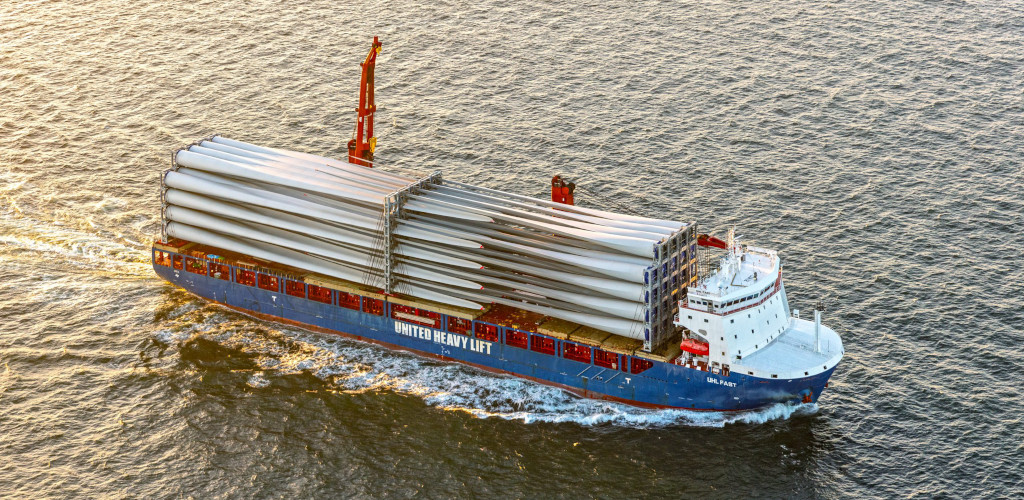No Fleet Renewal in Sight Despite Solid Earnings
 By Yorck Niclas Prehm, head of research at Toepfer Transport.
By Yorck Niclas Prehm, head of research at Toepfer Transport.
From Issue 5 of Breakbulk Magazine.
Of late, you might have come across many cheerful and optimistic faces among shipowners and carriers. After a long period of inadequate freight and charter rates that nibbled away at carriers’ balance sheets and directly at ships in terms of less preemptive maintenance, revenues began to soar, increasing in what might be described as leaps and bounds to reach unexpected record levels in mid- 2022.
The standard ship within the industry, the so-called E/F-type – for which the charter rate, according to the Toepfer Multipurpose Index, moved within a narrow margin of between US$6,000 per day and US$8,000 per day between 2016 and March 2021 – suddenly attained dizzying, record-setting highs of up to US$23,099 per day in July 2022. Even today, according to the Toepfer Index, the rates stand at US$14,106 per day (as of July 2023), which is still far higher than the 10-year average of US$9,564 per day. So, what’s going on?
At practically the same time as there was a noticeable uptick in demand for MPV capacity, a number of Covid-related distortions took place in the container market. The result of this was that a huge number of MPV vessels were taken off the market by container lines at unprecedented rates to marginally alleviate capacity shortages in the container market.
Simultaneously, numerous shippers and forwarders that had become frustrated by the issues and delays in the container market began to load containers onto MPVs using breakbulk terminals that were less under pressure or less congested; some of them even de-containerized particular cargoes.
This situation – already a melting pot of different issues – then also had carriers and their employees added to the mix. After years of coping with price pressure from shippers, these groups began to realize they finally had an opportunity to levy exactly this same level of pressure themselves by taking advantage of the new, strong market position.
When it came to larger projects, this development resulted in massive problems. This was because maritime freight budgets are usually calculated years in advance and during this period, had been based on the stable low rates that had been enjoyed for the years prior. Prices on the spot market, however, had suddenly jumped to prices that were five times higher than had been budgeted for.
New Ships Nowhere to Be Seen
Now it would be reasonable to think that this positive development would result in new ship orders to counteract the aging of the MPV fleet and the linked steady decrease in available tonnage. But sadly, that was not the case.
With an expected commercial life span of 20–25 years for an MPV, the average age of the fleet sits at more than 16 years. Over 30 percent of the fleet that is in service (according to dwt) will need to be replaced over the next 5–10 years. At the same time, an ever-increasing number of environmental regulations and the desire by many customers to use “green” transport options are piling on the pressure to renew the fleet and replace older ships.
With a timeframe of about 24 months from the point at which the contract is signed to the delivery of a ship, you would think that the orderbooks should be full to bursting, but you just have to take a look at the figures to see that is not the case.
As of July, there were only 34 ships under a binding order or currently under construction, which is the equivalent of 3.43 percent of the sailing capacity. The majority of these vessels were ordered within the context of dedicated projects and volume contracts; once they are delivered, they are actually in use for many years and therefore not available on the open market.
So how is it that despite the ebullient revenues, a customer demand for “green” and modern ships, and growing demand – especially from the energy and infrastructure sectors – that we are not seeing any massive new orders for ships?
Lack of Suitable Shipyards
Firstly, there is the matter of shipyards. Building an MPV is much more complicated than building bulk or container ships. High crane capacities and the requirements regarding the cargo hold (length, load-bearing capacity, stability, etc.) mean that steel construction is complex. Equally, shipowners set very high standards when it comes to quality and they also meticulously monitor them on site using their own construction supervision teams.
Order numbers are also small and it is very rare to place an order for a larger series along with the corresponding synergies and economies of scale. There are therefore only a very few shipyards who are willing to take on construction projects that carry that level of risk and with such ‘inconvenient’ clients given that there are other clients for bulk carriers, tankers and containers queuing up to order off-the-shelf and mass-produced standard designs.
Similarly, shipyards currently operate on low margins and have to deal with steadily increasing costs for staff, equipment, steel, and construction financing; the more complex a project is, the higher the risk of a miscalculation.
MPVs are traditionally built in China and of the 34 existing vessels on the order books, 32 of them have been ordered there. It is part of the corporate culture in China to renegotiate existing contracts and price agreements. The low margins on which shipyards operate, as well as increasing interest rates and inflation, mean that appropriate reserves have to be maintained.
On top of this, you can also add in the impact of geopolitical uncertainty which, when put simply in terms of the market and future orders, might mean that any potential conflict, such as one between China and Taiwan, could result in the non-delivery of vessels. Furthermore, it is possible that availability could be used as a means of political pressure.
As for the banks, who often finance installment-plus payments during the construction phase for the shipowner, a situation such as this brings high risks with a question mark increasingly hanging over standard repayment guarantees from Chinese state banks.
Fuel Infrastructure Demands
Additionally, shipping that is green requires the use of green propulsion systems; some of these have now moved on from being pipe dreams and are actually available, but there does have to be sufficient infrastructure in place to supply green propulsion fuels. This is quite a simple prospect for a ferry company that only ever sails from A to B.
However, when it comes to a market whose strength lies in very flexible schedules and the ability to call at niche ports that lie close to the cargo’s final destination, the challenge is far greater. If a shipowner orders a vessel today, they alone will have to bear the risk that there will be a reliable supply of required fuel in sufficient quantities wherever it may be needed and for the whole lifetime of the vessel, which is likely to be 20-25 years or more. No charterer or shipper would reward this risk by offering higher freight rates without a guarantee.
So, we end up with a chicken-and-egg problem. Without the demand or sufficient order numbers for vessels that use green fuels (methanol, ammonia, hydrogen), nobody will take the risk of investing in the supply infrastructure; without a secure fuel infrastructure, no shipowner will place an order for a specific propulsion system to be used on a ship. Furthermore, the risk that additional costs might result from green propulsion systems – bearing in mind that there is still only very limited experience of using them to date – lies solely with the party placing the order.
These developments in the market are increasingly turning into a stumbling block for the energy transition. The MPV fleet, which will continue to steadily shrink in the future, is supposed to draw on its capacity to form the backbone for the development of renewable energy sources since it is exactly these vessels that usually transport the main components required for the necessary systems.
At the same time, we are facing the fact that we are becoming increasingly dependent on just one major country to supply us with new vessels, which further exposes us to a geopolitical cluster risk. Likewise, this has an impact upon the fleet that is in use. For example, 50 percent of the MPV fleet in use between 25,000 deadweight-tonnes and 40,000 deadweight-tonnes is now 100 percent under the control of China.
For a number of years now, we have been experiencing the loss of shipyards, staff and the knowledge we need for at least minimum fleet supply to be supplied from safe local sources. We are now facing an urgent need to create a political framework and sufficient incentives to both maintain and further develop this capacity.
Maritime transportation guarantees the construction and operation of critical infrastructure. Without the continued existence of independent and reliable transport chains, it will be near impossible to meet current and future climate targets.
 Yorck Niclas Prehm will be moderating a “Breakbulk and Heavy-Lift Fleet Update” on the main stage at Breakbulk Americas 2023 on Wednesday September 27 from 11:00am–11:45am. The session, which will also feature executives from AAL Shipping, US Ocean, S&P Global, Intermarine and BBC Chartering, will cover the changing nature of projects, the rapidly expanding size and weight of components, how changes in emissions directives and fuels will impact MPV newbuilds, and the sector’s ability to service project and demands in the near future.
Yorck Niclas Prehm will be moderating a “Breakbulk and Heavy-Lift Fleet Update” on the main stage at Breakbulk Americas 2023 on Wednesday September 27 from 11:00am–11:45am. The session, which will also feature executives from AAL Shipping, US Ocean, S&P Global, Intermarine and BBC Chartering, will cover the changing nature of projects, the rapidly expanding size and weight of components, how changes in emissions directives and fuels will impact MPV newbuilds, and the sector’s ability to service project and demands in the near future.
Check out the full main stage agenda for this year’s event, happening on 26-28 September at the George R. Brown Convention Center in Texas, Houston.
TOP PHOTO CREDIT: United Heavy Lift.
